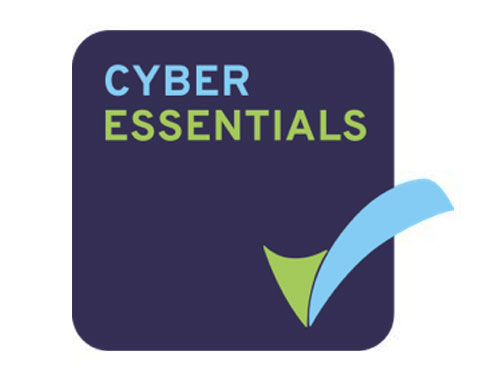
The working world has changed before our very eyes. As a result of the pandemic, we all had to adapt to new working methods, and even with a few employers fighting these changes, the power dynamic switched from the employer, to the employee.
With remote and hybrid working arrangements leading the way, employers who haven’t yet followed suit, need to quickly get on board or risk losing out on hiring top talent—and retaining them.
In this blog, we will be exploring the new way of working and how this will continue to develop and look in the future, as well as how Dynamics can help your business to manage novel challenges remote and hybrid work brings us.
Why remote and hybrid work arrangements are the way forward
Although many organizations had no choice but the implement remote work models during the peak of the pandemic, and the months that followed, it had already been adopted by some companies prior to 2020—no doubt because they recognized its value before the rest of us may have.
As the change was forced upon us, potential top talent within the workforce, started to prefer hybrid, or working from home. And. according to Nigel Frank’s Careers and Hiring Guide, as much as 73% of Microsoft 365 and Azure professionals actually want flexible working conditions.
So, let’s take a look at some of the benefits more flexible work arrangements bring us.
1. It can improve productivity
Despite assumptions about workers doing less when they’re not within eyeshot, trusting employees to maintain their usual standard of work and to do their contracted hours without supervision can motivate them to work even harder according to a survey carried out by the University of Southampton—particularly if they’re conscious of not underperforming because they’re working at home.
We’re all different, and although some employees thrive being in an office environment 5 days a week, it doesn’t always suit others—and that’s completely fine! So by negotiating on this and letting workers either work fully remote or on a hybrid basis can improve their satisfaction and naturally, they’ll be motivated to work harder for your business.
2. It provides a better work-life balance
By allowing your employees to work from home, you also allow them the convenience they need for better balance their work with their other commitments, such as childcare, appointments, or just being able to meet with their friends more readily.
Socialization is important, and especially during working hours when you could easily work through all day without lifting your head. That’s why many companies are preferring a hybrid approach, to ensure everybody gets the interactions needed to better well-being every week. And this can still be completely flexible. If you’re able to, give your staff the choice of which days to work in-office and which to work at home—that way they still get the flexibility of working on their own terms.
3. It gives staff more autonomy
Nobody likes to be micromanaged, and conveniently, working away from the office doesn’t much allow for it either. By giving your staff the information and resources they need to get on with their jobs, you not only help to develop their own personal skills like organization, but in doing so, you show that you trust them to get on with their tasks on their own—this in turn can boost happiness and job satisfaction, making your employees work harder.
4. It develops teamwork and communication
When your staff can no longer turn around to ask their colleague a quick question, they need to develop a much more structured style of communication. And while it might not be as convenient as face-to-face conversations, we have brilliant software suites available, such as Microsoft Dynamics, that can accomodate for these new working styles.
For example, Teams that was developed as part of the Microsoft 365 family of products offers both a workspace and chat functions for your employees. Plus, it means they’re not left working in complete isolation all day—they can quickly pop a message over to each other to check-in, and as their employers, so can you!
Hybrid working and finding the right balance
Setting company-wide rules for how to split up days in the office and at home, has to be flexible. Choice is paramount, as choosing for your employees is a double-edged sword.
There’s no need to micromanage everything. You can simply say 3 days in the office, 4 at home, you choose which, and leave it at that. However, ensure that your employees know this could be subject to change, for example, if meetings need to happen face-to-face.
How to maintain work culture with a remote team
There’s one thing that remains constant. The personalities, convictions, and ambitions of your employees.
But with the change to hybrid and remote working arrangements, culture will have to change to navigate this new normal. The core of your culture, however, will not. If the culture strived for profit, things will pivot in the same sense. If the culture praises employee development and nurture, the same thing applies.
Your employees will expect more of the same, if not slightly better than what they previously had. Hybrid and working from home are already improvements, so it’s up to you how to handle it within your Dynamic teams.
That being said, regardless of your company culture, these changes can have a big effect on the mentality of your employees. Being at home can sometimes equate to feeling alone, if you don’t adequately support your teams during the transition.
So, make sure you have a system set up to enable them to work more effectively and have the communication and direction they need to get their work done to a high standard. This could look like holding weekly department calls to keep everybody in the loop, monthly one-to-one consultations to discuss each individual’s performance and allow them to raise any concerns, or it might even just be having a departmental Teams chat where you can keep the sense of comradery your team has always had.
How to keep a team mentality when people are remote
The ins and outs of remote work have been debated for a long while before the pandemic forced us to adopt it, with one main area of concern being, how exactly will we maintain a team mentality when the team is split?
Well, here’s how…
1. Make working together as easy as possible
It’s one of the big questions. How do you keep employees motivated on the task at hand? How do you make sure they stay committed to the cause, when you aren’t there to motivate them?
There’s one thing that remains a fact. Your employees still have the same skill sets and aptitude they had, before working styles changed.
So, the simple way to make sure everyone is working as a well-oiled machine, is streamlining the working process. Know where files are, when files should be submitted, who needs to clear things, and make sure that the actual work itself is not impeded if it doesn’t need to be. The less of a chore it is, the more you empower your team.
2. Be lenient on mistakes, heavy on the praise
There’s one thing that never changes. Humans making mistakes, and humans succeeding greatly. If you, yourself, make a mistake, do you shout at yourself? If you do something great, do you feel good about it?
The same applies for your teams. We haven’t reached the age of complete automation yet, and even AI makes mistakes at times. So be understanding, and let them know how to fix it, without bringing down the hammer.
But if someone does something that knocks everything out of the park? Let everyone know. Share their accomplishments. Empower your people, and let them know they’re valued.
Making Microsoft Dynamics future-proof
Microsoft Dynamics enables you to put in as much as you get out of it, so it’s important to adapt, and encourage, the use of the suite with your employees.
The business suite can be accessed from any computer, from anywhere, as long as there’s an internet connection. If you were using the suite beforehand, not much will change from what’s already the norm, except from implementing new strategies, or new apps, to accommodate for not being in an office presence 24/7.
1. Integrate with every app you can find
This advice is still prominent, even if you’re still in the office. There are so many interactions with Dynamics, that it’s hard to list everything available.
Do you use LinkedIn? It can integrate with Sales Navigator. Project management? You can integrate with Project Operations. Whatever you can find to shave seconds, minutes, and hours, off your work process—use it.
Summary
If hybrid and remote working arrangements are things you’re fighting against, it may be time to just submit to it. The world’s talent are starting to demand it as standard, and if you don’t offer it, someone else will.
It doesn’t have to be a difficult thing, however. The transition can be swift, especially if you’re using Microsoft Dynamics, or any other business suite. Most operations use cloud storage, and online based web applications, so all your employees really need is their laptop.
As we’ve already mentioned, working from home improves productivity, and job satisfaction—and a happier employee means better productivity and morale. It can also be a useful tool in both attracting and retaining top talent, and Dynamics can help you do this.
Struggling to source talent for your Dynamics team? We have an extensive roster of Dynamics candidates for you to browse, or why not use our Candidate Search to filter by your essential criteria?
Looking for fresh Dynamics talent to join your team?
More choice than any other agency and many candidates ready to start immediately.



